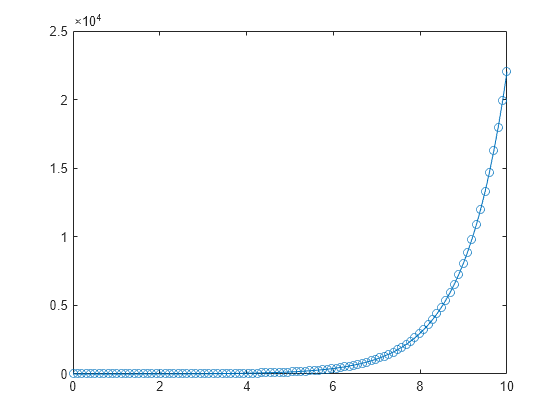solutionFcn
Syntax
Description
fh = solutionFcn(F,tmin,tmax,Name=Value)OutputVariables=[1 2] to limit the function handle
fh to interpolate only the first two solution components.
Examples
Input Arguments
Name-Value Arguments
Output Arguments
Version History
Introduced in R2023b
See Also
ode | solve | ODEResults | odextend

